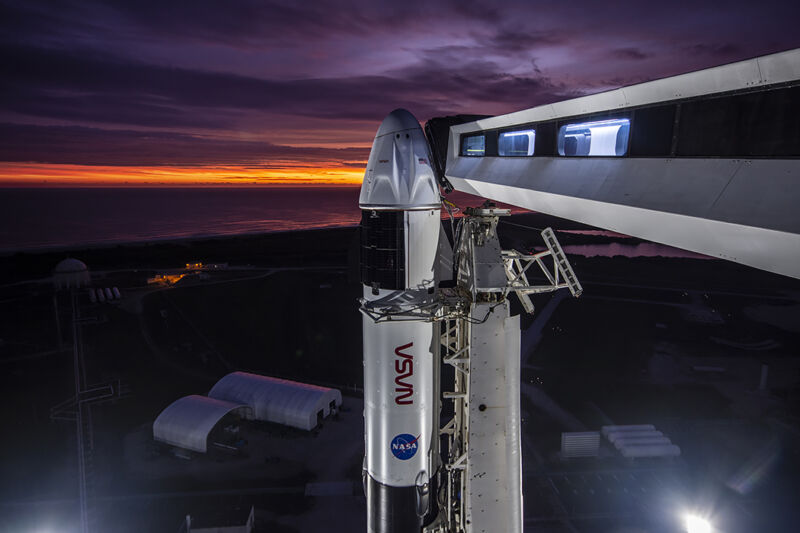
Welcome to Edition 4.22 of the Rocket Report! Please note there will be no report next week, as the author will be taking the week off. Also, I wanted to say that Thursday marked the 50th anniversary of the British-built Black Arrow rocket successfully reaching orbit for the first time. The Black Arrow program was canceled the same year, after the British government decided it would be cheaper to use US-built Scout rockets for its needs.
As always, we welcome reader submissions, and if you don’t want to miss an issue, please subscribe using the box below (the form will not appear on AMP-enabled versions of the site). Each report will include information on small-, medium-, and heavy-lift rockets as well as a quick look ahead at the next three launches on the calendar.

ABL Space raises $200 million. Small-launch company ABL Space Systems has raised an additional $200 million just seven months after a $170 million round, SpaceNews reports. The original Series B valued the company at $1.3 billion, while the expanded round nearly doubles that to $2.4 billion. Dan Piemont, president and co-founder of ABL, said the company still has most of the $170 million it raised in March, describing the new round as “somewhat opportunistic and driven by insider interest.”
More facilities, more machines, more production … Much of the additional funding will go to scale up production of ABL’s RS1 vehicle, which is nearing its first launch. “We have received large orders for RS1 and will need to scale faster than we previously planned to meet the demand,” he said, with more than 75 launches under contract. “Our investors have seen the incredible demand for RS1 and want to make sure we have all the resources we need to serve it. (submitted by Ken the Bin)
Firefly targets early 2022 for next launch. During the first attempt of Firefly’s Alpha rocket launch in September, the booster failed after one of its first-stage engines shut off only seconds after launch. But the company is already well on its way toward a second attempt, CEO Tom Markusic told Ars. Firefly is currently targeting the end of January for the vehicle’s second launch.
Going fast from first to second launch … Markusic said the company has completed assembly of the rocket’s first stage and will soon test it in Briggs, Texas. Then, Firefly plans to deliver hardware for its second flight to the launch site at Vandenberg Space Force Base in December in preparation for a launch. Getting a second Alpha rocket launch off within six months would represent a quick turnaround in the small-launch industry.
Blue Origin eyes UAE for New Shepard. The company is looking at the United Arab Emirates’ desert as a possible location for a spaceport for tourists, The National reports. In an interview, Brent Sherwood, senior vice president of advanced development programs for Blue Origin, said the UAE was an “obvious choice” for a spaceport and that the company was looking to expand its launch sites from the current one in El Paso, Texas.
New Shepard, new launch site … “Now that we are operational for tourism, the next thing we are looking at is other locations around the planet to establish launch and landing sites for New Shepard,” he said. “A couple of nights ago I slept over in Sharjah and did some stargazing in the desert. It was only 30 minutes away from Dubai, so I think it’s very promising to think about areas here.” If the company can work around ITAR, this seems like a solid idea.
Space Rider offers payload opportunities. The European Space Agency said it is getting closer to launching its small, reusable Space Rider vehicle. The uncrewed vehicle’s debut is expected next year on a Vega-C rocket. While in orbit, Space Rider aims to provide a laboratory in space for an array of applications, orbital altitudes, and inclinations.
Up to two months in orbit … Space Rider is about the size of two minivans. Its re-entry module hosts a multipurpose cargo bay that can accommodate up to 600 kg of customer payloads. This re-entry module, coupled with the AVUM orbital module, supplies power along with thermal control, data-handling and telemetry capability during missions expected to last up to two months or longer if needed. Interested organizations can inquire with ESA.
Ukraine signals its support for Canadian spaceport. Senior Ukrainian officials are heading to Canada in November, and they plan to stop in Halifax and Guysborough County, SpaceQ reports. This is the site where Maritime Launch Services is proposing to build a spaceport in Nova Scotia. Among the officials coming are Deputy Prime Minister Oleg Uruskyi, State Space Agency of Ukraine Administrator Vladimir Taftai, and likely Foreign Affairs Minister Dmytro Kuleba.
First funding, then permits … Having previously secured $10.5 million in private financing, the Canadian company has been working to secure the environmental permits needed to construct a spaceport. Finding a viable rocket to launch from the spaceport is another big step, and that’s where the Ukrainians come in. The Ukrainian government appears willing to provide funding to Ukrainian companies Yuzhnoye and Yuzhmash for the continued development of the RD-870 rocket engine that would be used in the first stage of the Cyclone 4M launch vehicle. The RD-870 could loft as much as 5 tons to low Earth orbit. (submitted by js)









